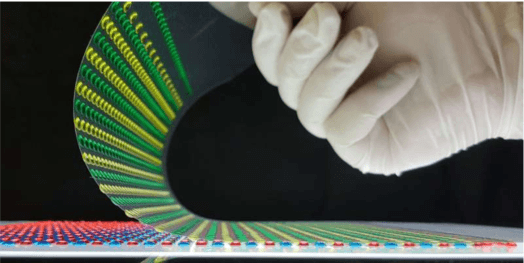The knifefish: a (power) source of inspiration
on
The ongoing integration of technology into living organisms requires some form of power source that is biocompatible, flexible, and able to draw energy from inside a biological system. Generating electricity inside the body might provide sustained power for implantable devices such as heart pacemakers, sensors, drug delivery pumps, and prosthetics, but also for wearable devices.

Looking to nature for inspiration
In the hope to find a solution for this problem, researchers at the Swiss University of Fribourg’s Adolphe Merkle (not Angela Merkel) Institute (AMI), the University of Michigan, and the University of California San Diego have studied in close detail the electric eel, also known as knifefish.
Many small makes a great
The eel’s electric organ, spanning about 80% of its body, consists of parallel stacks of long and thin cells known as electrocytes. Triggered by the brain, these cells each generate a small voltage by allowing sodium ions to rush into one side of the cell while potassium ions run out on the other side. The resulting potential can reach 600 volts.
Inspired by this principle the scientists designed a power source that generates electricity based on the salinity difference between compartments of fresh water and salt water separated by ion-selective membranes. Putting several hundred of such compartments in series makes it possible to generate 110 volts just from salt and water.Space technology & 3D printing
To trigger all the cells at the same time the researchers used a printed sheet originally developed to unfold solar panels in space.
Each component of this power source is made of a hydrogel, a solid-seeming polymer cage that contains water and can conduct salt ions. These components can be assembled on clear plastic sheets using a commercial 3D printer.
Not there yet
The results are still far from matching the capacities of the eel. Tapping into the body’s metabolic energy resources remains the major difficulty. Several avenues are open for exploration like mobilizing ion differences in for instance stomach fluids, or by converting mechanical muscle energy to electrical energy.


Discussion (0 comments)